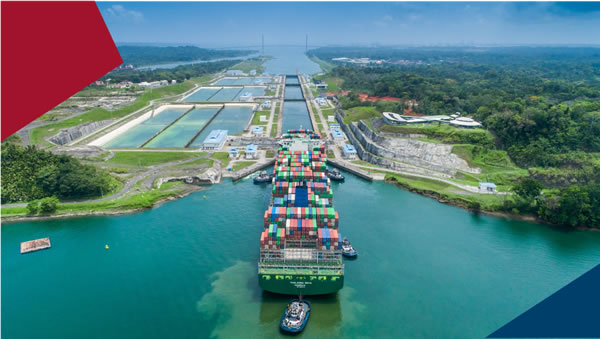The COVID-19 pandemic has undoubtedly changed the status quo of the shipping industry. As supply chains shifted, trade patterns once solidified in their routines altered course and a whole industry began to adapt. This exposed areas up and down the supply chain that needed to reform to the demands and challenges of today, beyond pandemic preparedness. Most notably, the latest IPCC report revealed that human influence has warmed the Earth’s climate at an alarming rate, and it is expected that global warming of 1.5°C and 2°C will be exceeded during the 21st century unless deep reductions in carbon dioxide (CO2) and other greenhouse gas (GHG) emissions occur in the coming decades. This report sounded the alarm, and proved, furthermore, that inaction is unacceptable.

The Panama Canal has transcended beyond its role as a shortcut in the logistics chain, offering reduced voyage times along maritime routes and emissions, to an advocate for sustainable shipping and route optimization as a means to reduce CO2. Thus, this past year, it introduced several initiatives to better align with the global response to climate change, as many players in the value chain have done, from shipping lines to cargo owners.
At the start of 2021, the waterway launched the CO2 Emissions Dashboard, which began tracking monthly data on carbon emissions per segment. In April 2021, the Canal also announced its objective of becoming carbon neutral in its operations by 2030, a deadline shared by many in the maritime industry, as the urgency of climate change continues to pose an imminent threat to the Earth’s resources.
As recently cited by the UN Global Compact’s Charting a 1.5 C Trajectory for Maritime Transport brief published this month, the Canal established its decarbonization targets, while encouraging customers to maximize sustainable transits by publishing its data through the Emissions Dashboard, demonstrating actions that can be taken to accelerate decarbonization across the shipping value chain. Just this month, the Panama Canal and more than 150 other organizations across the maritime value chain signed the Call to Action for Shipping Decarbonization, urging world leaders to help further accelerate the decarbonization of shipping.
Looking ahead, the Canal is working on its roadmap to outline the specific steps to achieve its goal of carbon neutrality by 2030, which includes generating electricity from renewable sources, consolidating facilities to minimize the impact of its operation’s footprint, and migrating the Canal’s fleet to electric vehicles and hybrid tugboats. In addition, the Canal will also establish a pricing strategy that promotes the efficiency and low-carbon emissions of the ships that transit the waterway.
To be effective in this movement, however, organizations must put not only sustainability, but also resiliency at the core of their operations. This requires investing in technology, infrastructure and optimizing operations to ensure they are as reliable and efficient as possible. At the Panama Canal, modernization and maintenance programs are planned in advance and then methodically choreographed and communicated to customers with sufficient time to minimize disruptions.
By 2030, the Panama Canal expects to invest roughly $2.4 billion in equipment replacement and infrastructure modernization, and $2.8 billion in maintenance. In addition, the waterway also plans to invest $500 million in digital transformation to maximize capacity and provide added value to its customers.
Implementing an innovative long-term water management system to sustain operations and human consumption will remain a significant focus by the Canal team. In the meantime, the team will continue to maintain transparency by sharing daily water levels at Gatun Lake and announcing draft adjustments at least four weeks in advance.
Transparency and ongoing communication with customers remain top priorities for the Panama Canal team throughout this green transition. Earlier this year, the waterway made modifications to its reservation system to offer additional booking options and flexibility for customers across market segments in anticipation of growing market needs. In the coming months, the Canal will aim to provide further pricing visibility and certainty to better safeguard the competitiveness of the waterway, taking into consideration the route’s value and dedication to providing a competitive service to the global maritime community.



